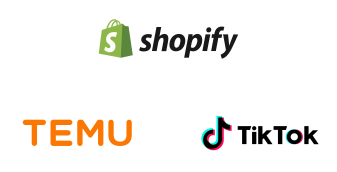Can Freight Forwarders Do Order Fulfillment? Key Differences vs. 3PLs
Only a handful of freight forwarders claim to manage order fulfillment, but the majority simply cannot.
If your forwarder says they can “do fulfillment,” think twice—your products and money could be at risk.
Is your beauty brand struggling with a 2%+ picking error rate? Do bulky furniture items see 5%+ return rates because of poor last-mile delivery? These pain points are not isolated—they are the direct result of choosing the wrong logistics partner.
For cross-border sellers and fast-growing DTC brands, logistics is not just about moving boxes. It shapes your costs, your delivery speed, and ultimately, your customer experience. A “low-cost” freight forwarder may hide countless risks and inefficiencies, while a professional 3PL (third-party logistics provider) builds a reliable, efficient, and scalable fulfillment infrastructure.
Freight Forwarder vs. 3PL: Why They’re Not the Same
At first glance, both freight forwarders and 3PLs move goods and process shipments. Many forwarders even promote “one-stop services” that sound like fulfillment. But their true capabilities end at transportation—ocean freight, air freight, and customs clearance.
Core positioning:
- 3PLs focus on the entire supply chain: warehousing, inventory management, pick & pack, and last-mile delivery.
- Freight forwarders act as transport intermediaries, coordinating international shipping and documentation.
Revenue models reveal the DNA difference:
- Forwarders earn from freight margins and customs fees—low margin, volume-driven.
- 3PLs earn from storage, pick & pack, and value-added services (labeling, returns, kitting)—their edge lies in service quality and system integration.
This fundamental difference explains why most freight forwarders fail to meet ecommerce sellers’ fulfillment needs.
Why Freight Forwarders Struggle with Order Fulfillment
Even forwarders that “add on” fulfillment often run into major roadblocks:
Limited service scope
3PLs integrate warehousing → orders → shipping → returns into one flow. Freight forwarders stop at arranging transport—they don’t manage inventory or order processing.
No inventory management
3PLs rely on WMS to provide real-time stock visibility, low-stock alerts, and replenishment planning. Forwarders don’t manage storage and can’t help optimize inventory turnover.
Shallow order processing
3PLs own the process: picking, verification, protective packing, labeling, and dispatch. Forwarders only move pre-packed cartons—they can’t fix fulfillment errors upstream.
Weak value-added services
3PLs offer kitting, labeling, quality checks, branded packaging, and returns handling. Forwarders provide standardized transport services with almost no customization.
Cost Comparison: Freight Forwarder Pricing vs. 3PL TCO
For sellers, the ultimate decision comes down to total cost of ownership (TCO), not just freight quotes.
Freight forwarder pricing: based on CBM/weight, route, and container size. It covers transport only. Sellers must source warehousing, packing, and final-mile separately, adding hidden costs.
3PL pricing: modular billing across warehousing, receiving, pick & pack, discounted carrier shipping, and value-added services.
Scenario-based comparison:
| Seller Type | Pain Point | Cost Driver | Freight Forwarder | 3PL | WinsBS Fulfillment |
|---|---|---|---|---|---|
| Beauty (high SKU, low AOV) | High picking errors, costly returns | Pick & pack fees | Manual picking ~95% accuracy → high returns | Automated systems up to 99.9% accuracy → fewer returns | Entry cost from $0.80/item, near-zero mispicks |
| Furniture (low SKU, high AOV, bulky) | Last-mile failures, high return rate | Warehousing + delivery | Forwarders cover line-haul only; last mile is DIY | Full “white glove” delivery (setup, trash removal), <2% return rate | End-to-end solution boosting ROI |
Note: Data ranges are based on WinsBS customer benchmarks. Contact us for a tailored quote.
Complex Fulfillment Needs: Where Freight Forwarders Fail
FBA & Multichannel Fulfillment
FBA returns: Professional 3PLs integrate with Amazon APIs for real-time return updates. Forwarders rely on manual emails → delays and errors.
FBA multi-warehouse inbounding: Partnered FBA carriers streamline inbound placement. Forwarders force sellers to self-manage split shipments, often causing misroutes and Amazon rejections.
Shopify integration: Most forwarders can’t integrate with Shopify OMS. Sellers must use ERP middleware (e.g., ShipStation) or 3PL dashboards for automation.
Product-specific bottlenecks
Furniture & bulky goods: Forwarders lack fleets for home delivery. 3PLs arrange white-glove services, crucial for customer satisfaction.
Fragile or high-value items: Forwarders can sell insurance but rarely handle specialized packaging. 3PLs offer protective packing, shock monitoring, and expedited claims.
Why Technology Makes the Difference
Modern ecommerce fulfillment is powered by automation and real-time data.
- API integrations: Sync with Shopify, WooCommerce, Amazon → automatic order import, address validation, and label printing.
- WMS functions: slotting optimization, FIFO/LIFO, wave picking, barcode checks.
- Data analytics: sales forecasting, replenishment alerts, inventory turnover reports.
- Full visibility dashboards: Track orders from “received” → “picked” → “packed” → “shipped.”
The real difference: 3PL tech ecosystems vs. forwarder spreadsheets. The former drives accuracy, scalability, and efficiency; the latter can’t keep up with ecommerce velocity.
Supply Chain Risk Management: The 3PL Advantage
Ecommerce sellers can’t afford disruptions. 3PLs bring proactive risk management:
- Multi-warehouse network: East, West, and Central US nodes ensure continuity during port strikes or weather events.
- Peak season planning: 3PLs add labor and truck capacity for Black Friday/Cyber Monday spikes.
- Carrier flexibility: With UPS, FedEx, and USPS contracts, 3PLs can reroute shipments instantly.
- Reverse logistics SLAs: 3PLs promise 48-hour return inspections and restocking.
Proactive risk controls include:
- Predictive analytics to lock in space and rates before peak season.
- Alert systems for ETA deviations over 48 hours.
- Distributed inventory strategies to reduce single-point failures.
The Right Choice
Freight forwarders are transport intermediaries—not fulfillment partners. They can’t provide integrated warehousing, order management, or customer service.
For sellers needing storage + order processing + multichannel shipping + returns, a professional 3PL is the only viable choice.
WinsBS offers transparent pricing, same-day fulfillment, multi-warehouse coverage, and API integrations designed for ecommerce and crowdfunding campaigns.
Pro Seller Guide: How to Vet a 3PL Partner
The market is crowded with freight forwarders claiming “fulfillment.” Here’s how to validate real capability:
Checklist:
- System integration
- Forwarder: manual spreadsheets.
- 3PL: API integrations.
- WinsBS: Native Shopify & Amazon integrations.
- SLA commitments
- Forwarder: none.
- 3PL: limited promises.
- WinsBS: 99.9% picking accuracy, 24-hour dispatch, 48-hour returns processing.
- Reverse logistics
- Forwarder: accepts returns, no QC.
- 3PL: basic returns handling.
- WinsBS: full inspection, relabeling, and restocking.
FAQ
Q: Can a freight forwarder handle my Shopify fulfillment?
A: No. Freight forwarders only manage transportation. 3PLs like WinsBS provide warehousing, picking, packing, and multichannel shipping.
Q: What’s the difference between a freight forwarder and a 3PL?
A: Freight forwarders focus on freight booking and customs. 3PLs manage the entire fulfillment cycle, including storage, inventory, orders, and returns.
Q: Are freight forwarders good for Amazon FBA returns?
A: No. Most forwarders lack US warehouses or API integration. WinsBS handles returns with inspection, relabeling, and reinbound to FBA.
Q: Why is 3PL often cheaper overall?
A: Despite more line items, 3PL pricing covers the full cycle and leverages bulk carrier discounts. This lowers total cost compared to fragmented forwarder + warehouse + courier setups.
Q: How do 3PLs reduce supply chain risks?
A: With multi-warehouse networks, peak season capacity planning, and reverse logistics SLAs, 3PLs provide resilience that forwarders lack.














